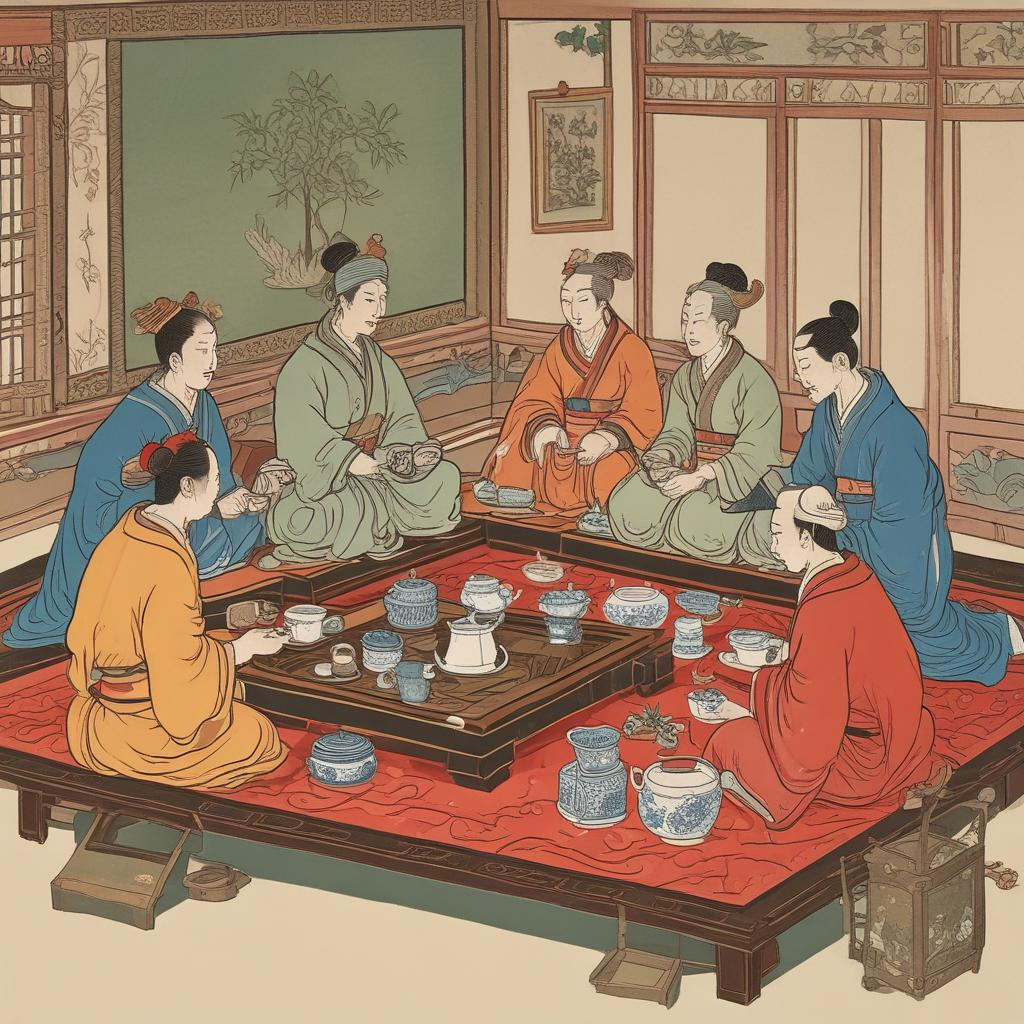On a brisk autumn afternoon in Kyoto, tucked away from the hustle of city life, I found myself seated on a tatami mat in an ancient wooden teahouse overlooking a serene garden. As maple leaves danced lightly in the breeze outside, I was introduced to an age-old ritual that would deeply impact my appreciation of tea. The host, a master in the art of the Japanese tea ceremony, moved with deliberate grace, every action precise and thoughtful. This wasn’t merely a demonstration of cultural tradition but an invitation into a meditative realm, where every sip of matcha was a step deeper into mindfulness. This experience was a beautiful prelude to an understanding that in many cultures around the world, tea is more than just a beverage—it is a profound act of connection, reverence, and art.

The tea ceremony, as I learned that day, varies significantly from one culture to another yet shares a common thread: it is a choreographed art that honors the moment, the ingredients, and the companionship of those who gather. Whether it is the meticulous grace of the Japanese tea ceremony known as Chanoyu, the gregarious and mint-sweetened gatherings of Moroccan tea rituals, or the solemn silence of the Chinese Gongfu tea ceremony, each practice offers a unique window into the cultural essence of a region.
The Roots of Tea Ceremony Traditions
The origin of tea ceremonies can be traced back to China, where tea first emerged as a medicinal drink over a millennium ago. By the time of the Tang Dynasty (618–907 AD), tea was transformed from a medicinal concoction to a symbolic ritual, encapsulating the philosophies of Taoism and Buddhism, particularly the ideals of harmony, respect, purity, and tranquility. This transformation was largely influenced by Lu Yu’s seminal work, "The Classic of Tea", which laid the foundation for the aesthetic and spiritual dimensions of Chinese tea drinking.
The practice then spread to Japan in the 9th century through Buddhist monks who brought tea seeds and the associated Chinese customs back from their studies. Japanese tea ceremony, or Chanoyu, centers around the preparation, serving, and drinking of matcha, a finely ground powder of specially grown and processed green tea. Over centuries, this ritual evolved under various influences into a comprehensive discipline encompassing not only the tea itself but also the ceramics, architecture, and garden design.
Significance and Symbolism in Tea Ceremonies
Tea ceremonies across different cultures are imbued with layers of symbolism and significance. In Japan, the tea ceremony reflects the Zen Buddhist principles where every action has meaning and is conducted with mindfulness. The rustic simplicity of the tea room and the utensils aims to foster a sense of wabi-sabi—the beauty of imperfection and transience. The host’s movements are a dance of quiet respect, emphasizing the Zen tenet of being fully present.
In contrast, the Chinese Gongfu tea ceremony highlights the skill and artistry of tea preparation. The term 'gongfu' translates to doing something with skill and precision. It uses oolong tea, and emphasizes on the aromas, tasting notes, and the aesthetic presentation. This ceremony can be a solitary activity meant to offer a meditative quietude, or a social event to honor guests with the effort and artistry involved in the tea preparation.
Morocco’s tea culture, dominated by the preparation of mint tea, is a symbol of hospitality, friendship, and tradition. Known as 'atai', the tea is prepared in a metal teapot with a lot of sugar and fresh mint. The pouring of the tea is an art in itself, typically performed by the head of the family, and carried out from a height to create foam on the surface of the tea—a sign of a well-made brew and a warm welcome.
The Universal Language of Tea
Across all cultures, tea ceremonies offer a language of their own, expressed through the serenity, the flavors, and the meticulous care taken in their execution. These rituals invite us to pause, reflect, and connect with others on a profound level. The act of sharing tea transcends linguistic and cultural barriers, creating moments of peace and mutual respect.
Experiencing different tea ceremonies can be a deeply enriching experience that offers insights into the values and aesthetics of a culture. As globalization makes our world smaller, these tea ceremonies stand as bastions of cultural preservation, teaching us the importance of mindfulness, respect for tradition, and the joy of sharing a simple cup of tea.
In Conclusion
The delicate flavors of tea can evoke memories, conjure images of distant places, and slow down time. In every culture that I have had the pleasure to explore their tea traditions, I found a universal truth: these ceremonies are not just about drinking tea, but about offering a gesture of hospitality, performing an act of communal sharing, and honoring ancient wisdom. As I recall the calm and beauty of that first tea ceremony in Kyoto, I am reminded that in every sip, there lies a rich history waiting to be appreciated, and a reminder of the quiet beauty and connection in the act of sipping tea together.


.jpg)






.jpg)



0 Comments